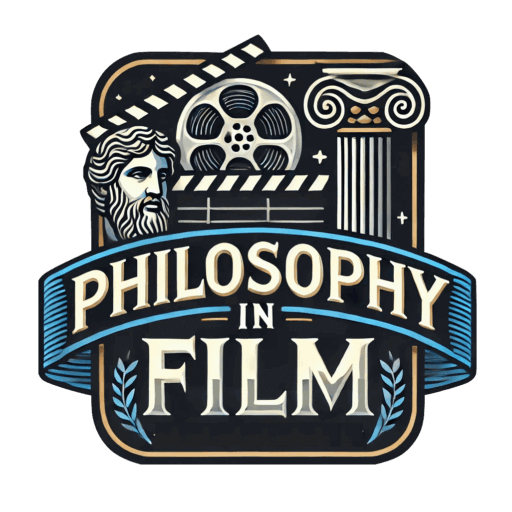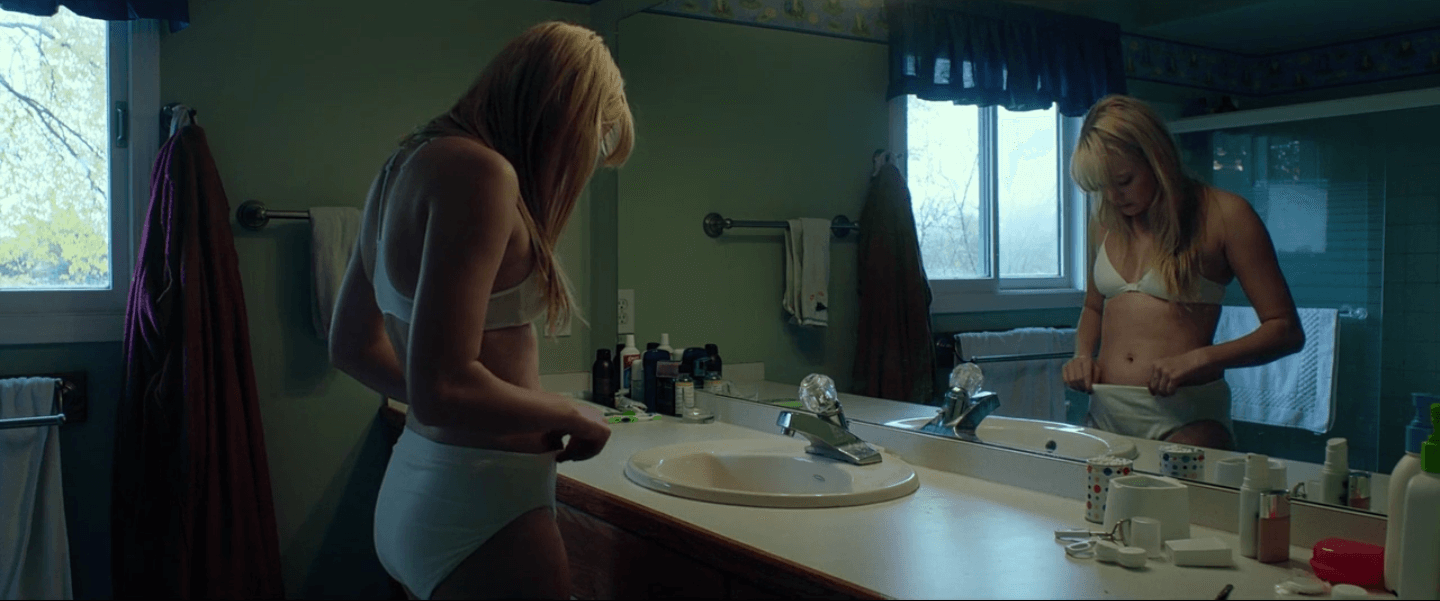Sex and the Creation of Horror in It Follows
Since the earliest days of horror films, sex has been a key component of the genre. Sometimes the sexual content is overt, and other times the mere allusion to or repression of sex allows for horror to occur. There are thousands of examples of intercourse being used for a variety of purposes in horror films, but it is most often a staple of the genre that sex is intrinsically linked to the monster or the source of horror in some way. In the film It Follows (David Robert Mitchell, 2014), sex occupies a complex position in the narrative, operating as a catalyst for the onset of horror, a mark of the horrific entity, as well as a necessary part of the alleviation of horror.
In films such as Teeth (Mitchell Lichtenstein, 2007) or A Serbian Film (Srđan Spasojević, 2010), intercourse is the centerpiece of the horror, itself disgusting or abhorrent in some fashion. In Teeth, a teenage girl’s vagina has teeth that castrate those who attempt to have intercourse with her, while in A Serbian Film, an aging porn star is given drugs that cause extreme aggression and sexual arousal, leading him to participate in horrific sexual acts with no memory of what has occurred. In both of these films, it is the sex itself that is horrific. It defies normal expectations of intercourse and makes it disgusting, unsettling, and ultimately horrific for the viewer.

In earlier films, like Cat People (Jacques Tourneur, 1942), sexual desire, particularly unrestrained female desire, is seen as being able to transform a character into something horrific. Cat People plays with the idea that female sexuality, if left unrepressed, can create a monster. In the film, the lead character, Irena, turns into a bloodthirsty jungle cat whenever she becomes sexually aroused.
Still in other films, the threat of nonconsensual sex creates horror for the audience. In the film Shivers (David Cronenberg, 1975), the capability for sex to be acted out on unsuspecting humans by the monsters creates horror. It is also the act of sex that transforms the victims into the very same monsters, thus enhancing and continuing the horrific scenario. The threat of sex is also an underlying quality of many of the “final girl” films of the 1970’s and 80’s, like The Texas Chainsaw Massacre (Tobe Hooper, 1974) where there is a constant threat of death and possible sexual violation by the crazed family pursuing the last remaining female character.
And finally, in many slasher films, such as Halloween (John Carpenter, 1978) and Friday the 13th (Sean S. Cunningham, 1980), teenage libido and pre-marital sex are often the root cause for killing and horror in the narrative. Sex does not transform the characters into something horrific or even serve as a characteristic of the monster, but instead allows for horrific acts to occur. For example, in the opening scenes of Halloween, a 6-year-old Michael Meyers kills his older sister after she and her boyfriend have intercourse. Similarly, in the opening scenes of Friday the 13th, Jason Vorhees kills two Camp Crystal Lake counselors as they undress and prepare for a sexual encounter. Unrestrained sexual desire is used as narrative justification for psychotic characters to begin their killing sprees.

It Follows uses sex in a similar fashion, but with an important deviation from the standard formula. In the film, a girl, Jaime “Jay” Height, is followed by a malevolent, shape-shifting entity after having sex with her new boyfriend. The entity can take the form of any person, and simply follows its prey, and, if caught, violently kills them (as evidenced in the opening scenes of It Follows, in which a previous victim is left horribly contorted on the beach). The “curse” is passed on from person to person through sexual intercourse, and Jaime soon realizes that she will need to have sex with someone else, and explain the curse to them, so that they may continue to pass it on, lest the monster kill them and then pursue her again. Jaime is naturally upset by this revelation, and at first refuses to pass it on. But eventually, the constant fear of being pursued and the knowledge that she could be killed by the monster at any moment forces Jaime to give in and have sex with Greg, a friend from school who has been trying to help her.
» You Might Like: Cinematography and Style in Rebel Without a Cause
Greg doesn’t really believe in the curse, but later the entity kills him and begins to pursue Jaime again. She and her friends try to confront and kill the monster by luring it into a swimming pool and electrocuting it, but this also does not work. Jamie eventually decides to sleep with her friend Paul, who has harbored a crush on her for years, and It Follows ends somewhat ambiguously, with the implication that the entity continues to follow Jamie and Paul as they begin a romantic relationship.
Jaime, who at the beginning of the film had no idea that the monster existed, suddenly becomes its primary focus, due entirely to her sexual encounter with the monster’s previous prey. If not for sex, the monster would not exist for the characters. However, it is also through sex that the monster can be “banished,” insofar as the curse can be passed along to another person, and then another, and another. The “cure” is to have sex with a new person before the monster catches up, but if the new victim is killed, then it will continue to kill each previously cursed individual in the chain of sexual encounters. It is never explained how or why, but sex is inherently a part of the monster’s existence. Surely, without sex, the monster would have no victims to pursue. However, sex is also an alleviation of the curse, albeit in a temporary and wholly incomplete way.
While the primary use of sex in It Follows is as a means for the monster to continue to exist, and as an insufficient cure for the curse, it is also linked to the production of horror for the audience. When the audience is first introduced to the monster as a physical manifestation, it is as a naked woman walking slowly toward Jaime. Later in the film, in one of the first close encounters Jaime has with the entity, it manifests as a disheveled, bloody woman. Her breasts are partially revealed to the audience and she begins urinating on the floor as she approaches Jaime. Later in the film, the entity is seen as a naked man standing on a roof as Jaime passes by. Nudity is frequently used as a visual indication of the monster’s relation to sex, often in horrific or unsettling ways, and to identify the entity as especially horrific.

This is most clearly illustrated after the entity is passed from Jaime to Greg. The two strike up a romantic relationship and, since Greg is skeptical of the validity of the curse, he is more than willing to take the risk. Three days after the two have sex, Greg says that he has seen no evidence of the curse and concludes that he is safe. However, that same night, the entity finally does appear to Greg, pounding on his bedroom door. When Greg opens the door, the entity, which appears as his mother, is only wearing underwear and an unbuttoned nightshirt, revealing her breasts. She immediately pounces on Greg, and begins gyrating on top of him, her legs wrapping around his, even as the life is removed from his body. The camera lingers on her underwear as she rubs against Greg’s pelvis, emphasizing the sexual nature of the entity, while simultaneously enhancing the horrific effect by generating images of incest between mother and son.

While not every manifestation is characterized by an emphasis on nudity or sexuality (the entity also appears as an old woman in a hospital gown, a very tall, menacing man with gouged out eyes, a young boy who hisses, and a variety of seemingly normal people), the horror is enhanced through the implementation of sex, and the association of sex with the creation and transference of the horrific entity. Thus, while certain films use sex as a horrific act, and others use sex to lead to horror or transform characters into horrific beings, and still others make the threat of sex horrific, It Follows allows for a more complex relationship between horror and sex. There are moments in It Follows when the sex itself is horrific, like when the entity appears as Greg’s mom and attempts intercourse with him. And, it is an essential aspect of the plot that sex leads to horrific situations by transferring the curse and the presence of the monster between characters.
However, what makes It Follows unique is that sex also serves as an insufficient cure for the curse, allowing the characters to be temporarily free from peril. Sex is not only a detriment to the characters, but also a possible remedy. However, as there is always the risk that the new victim will be caught, and that the curse will work its way back down the line to the initial recipient, the entity can never truly be killed, making it all the more horrific.
If you’d like to read more film essays like this one, consult the Philosophy in Film homepage!


what time is this scenes?